On the Fourth of July in 2018, members of the FGCU community, friends and family gathered in the Food Forest to dedicate a tree to Dr. John Herman in one of his favorite places. As they stood there in a circle, sharing meaningful remembrances and comforting each other in their grief, an Eastern diamondback rattlesnake inched into view as if on cue.
“It just rolled up not far from where we were standing,” remembers FGCU graduate Jessi Drummond, a longtime Food Forest volunteer and friend and former student of Herman’s. “I’d never seen one in there. It was wild — and very appropriate.”
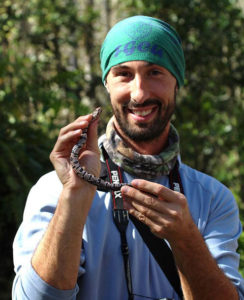
Herman, after all, had studied rattlesnakes, handled them, tracked them on campus. Some even called him “The Snake Whisperer.” He loved snakes and helping dispel some people’s fear of them. One of his last hurrahs occurred in Peru the summer before he died, when he wrangled a rare bushmaster, the largest viper in the world, which can grow 12 feet long.
Herman was the sort who would fearlessly duck into scrub and emerge with a venomous snake squirming in his hands — all in the name of research. A herpetologist and biology professor, his goal was to expand scientific knowledge of the often-misunderstood creatures, although he also studied gopher tortoises and burrowing owls.
Beyond his fascination with Florida’s abundant fauna, Herman was admired as that unique brand of teacher who could inspire even non-science nerds to learn about the natural world, to muck about in a swamp, to appreciate the beautiful geometry of a diamondback’s skin. In his relatively short time at FGCU, Herman touched the lives of countless individuals with his contagious enthusiasm for nature and science and his accessibility as a teacher, colleague and friend.
From the time he was able to walk, John E. Herman reveled in scooping up frogs and turtles and snakes. Most kids outgrow that phase. Herman clung to it, even as he battled the cancer that ended his life in 2018 at age 41. His curiosity and love for the natural world fueled his life’s work, his passion, his mission to inspire the same connection in others.
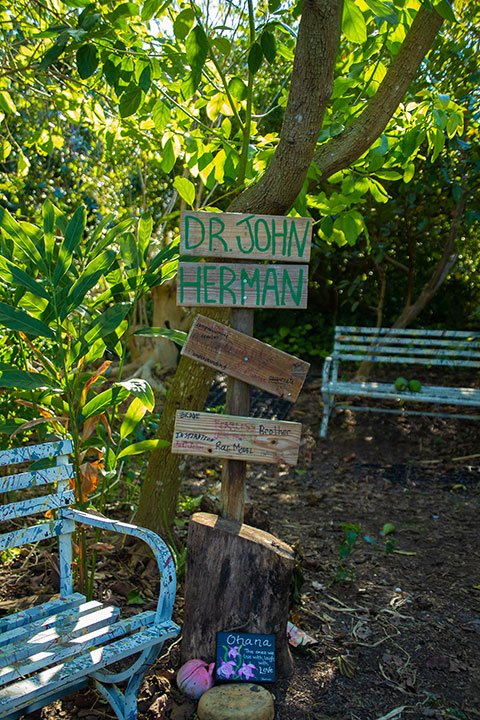
“There’s something people say about field biologists and naturalists — all of the good ones have a quality of a child in them,” says environmental science professor Dr. Win Everham. He remembers hearing buzz about Herman when Herman was interviewing for the instructor position he got in 2011. “It’s like we’re 10 or 12 years old and just excited to be able to run in the woods. John certainly had that sense of wonder, that joy of discovery that’s infectious. He genuinely cared about people. The people who didn’t get to meet him really missed something.”
It’s no wonder that interest quickly spread in commemorating and preserving Herman’s legacy as an educator, researcher, husband and father after his death. From planting trees to seeding undergraduate and graduate scholarships, from establishing a new annual award for general education teaching to supporting the continuation of Herman’s research, those closest to him have created lasting tributes to an exemplary educator.
“He so clearly represented what we aspire to be at FGCU,” says Director of Undergraduate Scholarship Charles “Billy” Gunnels, a fellow biologist who specializes in animal behavior. “He had some of the best qualities we want from a professor. He was here first and foremost to teach and had a strong commitment to service and research. He always made himself available to students.”
One of the many was junior biology major and Honors College member Alex Marsh, the first undergraduate recipient of the John Herman Biodiversity Studies Opportunity Scholarship endowed by Herman’s family. Whenever he spotted a rattlesnake on one of the campus nature trails, Marsh would phone Herman, who had the permits needed for handling venomous snakes, so they could measure them and take scale samples. Like his mentor, Marsh grew up exploring the wilderness and caught his first rattlesnake at 13. After calling, Marsh would sit and observe a snake for however long it took Herman to arrive on the scene. One time, it was an hour and a half.
“He got out of his truck and said ‘Where’s my baby at?’ He was so happy whenever he got to interact with the rattlesnakes and do the research,” Marsh recalls. “The passion he put into everything made everyone want to be a better person. Working with him definitely made me more passionate about doing research.”
Teaching was ‘a pleasure and a joy’
Like the ophidian-obsessed undergraduate who’s following in his footsteps, John Herman grew up poking around the natural world. Raised on a sprawling farm near the Lake Erie shoreline, he developed a knack for finding bugs and reptiles amid the marshes of a nearby game reserve, according to his parents, Paul and Terry Herman. The family farm has since been transformed into the John E. Herman Wetland Restoration (see sidebar).
“He and his brother were in 4H. Charlie was into crops and John was running through fields catching insects,” Terry Herman recalls. “He had an enormous collection he took to the state fair.”
A retired Bowling Green State University professor, she says her son never thought of teaching as a job. It was “a pleasure and a joy,” whoever he was sharing knowledge with: his children Sydney, 16, and Garrett, 12, from his first marriage, to Julie Herman; or non-science nerds in one of his general education biology courses; or community members learning about Florida ecology during one of his Strolling Science Seminars at CREW Land & Water Trust trails. Hands-on teaching — that was his forte.
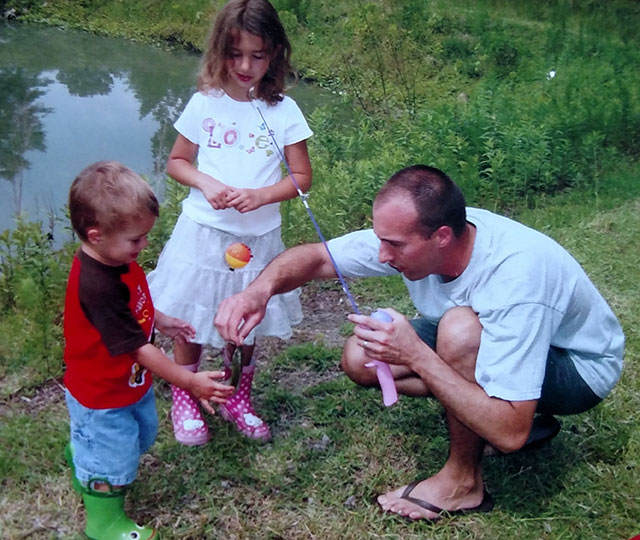
“He was always teaching his children,” Terry Herman says. “There was nothing more important to him. They were integrated in his school life and would go on out weekends doing field work with his students. They’d all come back to his house and sit around talking about research and eating pie. John was an avid pie maker.”
His favorite? Coconut cream, according to Wendy Brosse, who preferred his pumpkin pie. A biologist who specializes in botany, she met Herman at a herpetology symposium in her native Costa Rica; they married in October 2015, just a little more than two years before he was diagnosed with cancer. Even as he battled the disease, he found the energy to continue teaching and helping students with research.
“He was a super-strong person who was able to see past the pain he was feeling,” Brosse says. “Any day he could, he would go to work. He loved what he did — you could see it. Even if someone didn’t like snakes, he could teach them something that would help them appreciate the world around them. It was pretty contagious.”
Kindred spirits were drawn into this familial FGCU network centered on Herman. And like extended kin, their efforts to honor him and continue his legacy have given solace to his relatives.
“It’s very comforting to see so many people cared,” Brosse says. “It does feel like a big family.”
Adds Paul Herman, John’s father: “We’ve had so many people tell us how much they appreciated the help that our son gave them — even parents who said he helped their son or daughter get headed in the right direction. John would give anybody anything — it didn’t have to be about biology.”
Julie Herman still remembers how excited Herman was the first time a student of his said, “I never liked science before. You made it fun.”
“His motive wasn’t for them to change to a biology major, but he wanted them to learn something and enjoy their time,” she says. “He wanted to show them trudging through scrub or mud or waist-deep water looking for critters could be fun.”
A role model for students
Herman’s reputation as an educator, colleague and friend was clear well before news of his death spread in July 2018. In a message to the campus community, Dr. Robert Gregerson, then dean of the College of Arts & Sciences, said: “He cared deeply about his students, both academically and personally. No one devoted more time to helping students succeed than did John. He was a model of The FGCU Effect and will be sorely missed by all who knew him.”
Former students posted tributes on Facebook like this: “I was lost in academia and I wasn’t sure what I wanted to be when I grew up, until I took Dr. Herman’s class,” one wrote. “He inspired me to become a scientist and now I work as an environmental scientist in water quality. Dr. Herman instilled a passion in me for our natural world and lit a fire in my heart.”
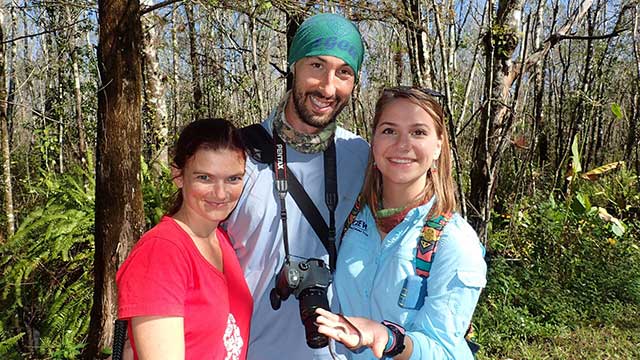
Herman became a mentor and friend to Jessi Drummond (‘14, Environmental Studies) after she took one of his ecology classes. He had a knack for adapting to the different ways individuals learn and for demonstrating complicated concepts outdoors, where students could see them in a real-world setting. Beyond teaching, Herman supported their research projects, helped them figure out career paths and offered a caring ear to their troubles, Drummond says.
“John provided me with an excellent example of the person I wanted to be,” she wrote in an application essay for the graduate scholarship she received through the Herman endowment, which has helped her complete her master’s degree while also working full time at FGCU. “He inspired me to constantly explore the world and not be limited by a life society creates for us.”
Another grad student, Matthew Metcalf (’17, Environmental Science Master’s), wound up at FGCU because of Herman, and now he’s continuing his mentor’s research as a visiting instructor. With a zoology degree from Auburn University and an interest in herpetology, Metcalf was looking around at master’s programs while “hopping from low-paying internship to low-paying internship.” Few places are better for studying reptiles than Florida, he says, so he made inquiries at FGCU. Herman invited him to visit and took Metcalf on a 16-hour field day to study Eastern indigo snakes, a non-venomous native species federally classified as threatened. At one point, Herman dove head-first into a burrow and pulled out a seven-foot indigo. Metcalf was hooked, and they became fast friends.
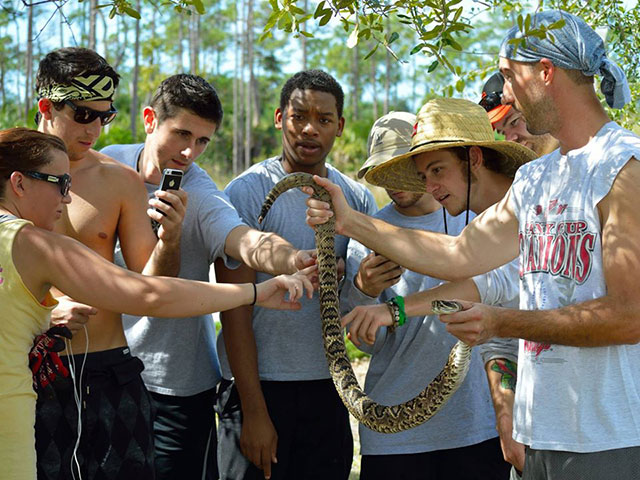
“It was awesome. I thought, ‘OK, he’s kind of insane but that’s cool, that’ll work,’ ” recalls Metcalf, who could relate to Herman’s sense of humor and personable manner as well as his love of reptiles. “I asked around, and everyone said, ‘You have to work with John.’ Everybody was saying super-nice things about him.”
Metcalf joined Herman in his rattlesnake research on campus, taking on more responsibility as Herman underwent chemotherapy. Their work in Southwest Florida is critical because most of the current knowledge is based on research conducted in northern Florida, where the climate, landscape, hydrology and plant life are very different, Metcalf explains. A key aspect of the work Herman started is studying wildlife in urban settings, like the FGCU campus, to see how human development impacts natural ecology. By having transmitters implanted in rattlesnakes they capture, the scientists can use radio telemetry to gather data about the vipers’ range, growth rate, mating habits and other valuable information.
Although the campus research is ongoing, it already has yielded at least one newsworthy finding: A parasite common to invasive Burmese pythons in the Florida Everglades appeared in a rattlesnake found on campus.
“This was the first time it was documented in an Eastern diamondback,” Metcalf says.
After Herman’s death, Metcalf was hired to teach, continue Herman’s research and “adopt” undergraduates like Alex Marsh whom Herman had been mentoring. This summer, the duo will join Gunnels for the continuation of a project to measure reptile and amphibian populations in a part of the Peruvian Rainforest that is expected to be impacted soon by human development. To those involved, the work clearly represents the spirit of Herman’s legacy.
“It’s very clearly inspired by the types of things he did and would want to do,” says Gunnels, who likens Herman’s enthusiasm for the natural world to a child’s excitement on a Christmas morning. “If he were here today he would very much be a part of that.”
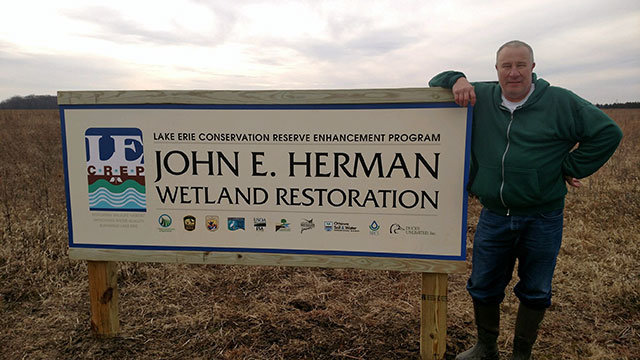
Restored Ohio wetlands fulfills Herman’s dream
In addition to endowing the John Herman Biodiversity Studies Opportunity Scholarship as a lasting legacy at FGCU, the Herman family has realized John’s dream of restoring the family farm as the wetlands it originally was. Part of the Lake Erie Conservation Reserve Enhancement Program, the John E. Herman Wetland Restoration is about 20 miles east of Toledo, Ohio.
Completed in 2018, the project restored 53 acres of wetland habitat and 62 acres of native grasses and flowers in Jerusalem Township and was recognized with an award from the local soil and water conservation district. The property borders another preserved wetland, helping to create a corridor for wildlife.
“Since John was little, he always wanted it to be wetlands,” says his father, Paul Herman. “John kept pushing until everyone in the family agreed. He didn’t get to see the final product, but he did his part, talking to the county agencies and working out the plans. They were impressed.”
“It was one of his favorite places, and we are happy that a piece of him will always be there,” adds Julie Herman, his first wife. “John was fearless. Confident. Caring. Supportive. And was always willing to try something new. Those are the qualities I see in our children and hope that when they think of him those are the things they remember.”